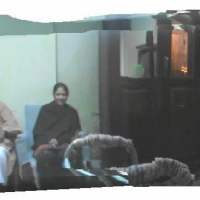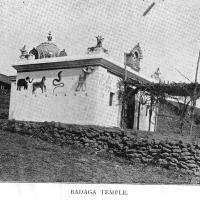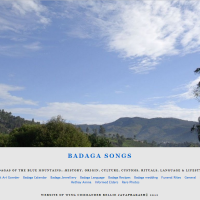dharshani raj (dharshani.ds@gmail.com) asks
‘I want to know if it is wrong in marrying a person with no moray’
This question, though appears to be simple, is an important one since many of us, including the self – appointed GOWDAS in every village or for that matter, many ‘old people like me’ are not clear and sure about this aspect.
There seems to be a ‘raging‘ discussion going on in FB Badagas Group.
Let me answer dharshani’s question to the best of my knowledge.
What is Moray (relationship)?
In simple terms, Badagas, [being a very small community], have evolved, over the centuries, a system in which marriages are not ‘fixed’ – call it arranged if you want, between certain hattis (villages) since the ‘blood’ relationship among them is considered to be very ‘close – anna thamma moray’.
How this could have happened is, like, in olden days, one brother deciding to move away from the hatti he was born in to establish a ‘new’ hatti for various reasons. For example, a brother from Hubbathalay could have moved to Eethoray. Hence, the male children of the elder bro X in Hubbathalay would/could not marry the female children of younger brother Y in Eethorai as they are considered brother and sister (being the children of two brothers).
Hence, Hubbathalay hatti has no moray for marriages with Eethoray.
This brings us to the grouping of various hattis into Ooru [communes] and Seemay.
So,where do we start to check about ‘Moray’?
Since, time immemorial, every Badaga belonged to a village, irrespective of his place of residence. For example, Kada [now, Srivasa Ramachandra] and Kangi [Lokeswari Renuka] are the son and daughter of Bhoja and Laxmi , living in Ooty [this can be, Bangalore, London or Boston in USA]. Since Bhoja is the son of Rama Gowder of ‘Hannu Mora Hatti’ [ or Jakkadha, Dhavani or Ketchigatti for that matter], Kada and Kangi belong to HM Hatti for practical or rather, moray purposes. By the way, in olden days, all Badagas belonging to Gowda [group] were known as Bellie Gowder, Ari Gowder etc.
So all the youngsters of HM Hatti are brothers and sisters. Marrying among themselves is, thus prohibited.
Now, our ancestors, being wise men of yonder, grouped certain hattis into communes called OORU. These hattis need not be very close to each other. The number of hattis forming a ooru need not be of a specific number. The next grouping done by our forefathers is forming a SEEMAY. Hence, a Seemay contains a few Oorus [which in turn has many villages]. And our Muthe Muhappa [the first of the ancestors] divided the Nilgiris into Nakku Betta [Four Mountains/massifs] to where all the Badagas belong to. See the division of Seemays and hattis in my websites here – Hattis, Ooru & Seemay or here
To put simply, a cluster of closely built houses formed a street -thara, [the thatched and later country tiled houses have common walls).
A few tharas formed a hatti with well defined and demarcated areas like ‘Dhodda Manay’ [big house- literally], ‘suthu kallu’ [mostly with a bikka mora (olive tree), gudi [temple],hanay [grass ground] etc.
A few hattis to Ooru. A few oorus to Seemay.
Four seemays namely 1)Thodha Naadu 2)Porangaadu 3)Mekku Naadu 4) Kunde [Naadu], to NAAKKUBETTA. see Hattis, Ooru & Seemay.

And now to specifics
As far as MORAY for marriages are concerned,
a) A girl/boy cannot marry a boy/girl from the same hatti to which they both belong to .
b) A girl/boy cannot marry a boy/girl from the same Ooru to which they both belong to.
c) BUT A GIRL/BOY CAN MARRY A BOY/GIRL FROM THE SAME SEEMAY TO WHICH THEY BOTH BELONG TO.
There is a wrong impression that you cannot marry from the same seemay.
My own example
My father, Bellie gowder, one of the few educated Badagas was born in 1896 in Bearhatti ( the real surprise is that my grandfather Kada Gowder decided to educate my father in St.Michael’s in Coimbatore. In those days, I understand, he had to be taken upto Mettupalayam in a Kattay Bandi [bullock cart]. He got a job in Cordite Factory, Aravankadu near Hubbathalai. He married my mother Kaade (Idy ammal), daughter of Rao Bahadur Bellie Gowder and sister of Rao Bahadur Ari Gowder.
Bearhatti is one of the six hattis belonging to AARUOORU [six villages], Jakkadha [Jagathala] being the ‘head’ village. Hubbathalay is one of the hattis coming under HATHOMBATHU OORU [nineteen villages]. Both these villages belong to PORANGAADU.
After marriage, firstly for convenience as cordite factory is closer to Hubbathalai than Bearhatti and secondly being the youngest daughter of Rao Bahadur Bellie Gowder who was the Naakku Betta Gowda (chief) at that time and as she was only 15 at the time of marriage in 1927, my parents decided to settle down in Hubbathalai.
But my mother being a fiercely ‘PROUD” lady insisted that she would stay only in a new house built a little away from the main Hubbathay hatti. Thus, was born my ‘home’ called ‘DHODDI’ in 1948.
For all practical puposes, we are Nattaru (Guests- literally) of Hubbathalay.
Story does not end here. Though, I was born and brought up in Hubbathalay, I am married to Tara, grand daughter of Rao Bahadur Ari Gowder of Hubbathalay. That is, my mother and wife are from the same hatti.
Please note ; It is very common to see many marriages among boys and girls living in the same village. Living, I said and NOT BELONGING to the same village. But they are perfectly suited to each other and probably known to each other from childhood. May be their marriage is a LOVE marriage.
Exceptions
Incidentally, there are a few marriages solemnised between the boys and girls belonging to the same Ooru. In one of the cases known to me, a boy from Eethoray is married to a girl from Hubbathalay – both belonging to Haththombathu Ooru. Though, it created some flutter in the beginning, it has been accepted now (due to the fact a rich and politically very influential person is involved??)
Do you know that Kodhumudi is one of the villages which is considered as two separate villages consisting of Mel Kodhumudi and Kiya Kodhumudi and marriages between them is normal?
When you refer to Kinnakorai, in fact it refers to six/seven hattis and marriages do take place among themselves as some hattis in them is consided to be completely made up of Nattarus??
More on Moray
So what happens when a boy belonging to Kavaratti of Thodha Naadu seemay wants to marry a girl from Yedapalli Village of Porangaadu Seemay ?
This appears to be a case of NO MORAY in the sense moray is neutral here and not prohibited. And, in my opinion, there should not be any problem.
Causes for confusion
Originally or rather in the earlier days, marriages took place only within the groups like Gowdas, Lingayats[Lingakattis],Haruvas, Odayas and Thorayas as they formed their own hattis. For example, Odhanatty near Jakkadha is a hatti of Thorayas and it does not come under Aaru Ooru [and hence Porangadu Seemay].
Without going into the details of the unfortunate vertical divide of Badagas, in the early 1900s, where one section was against the compulsory invitation of Kothas [to ‘harakkolu idippudhuga’ – playing music on payment in kind or cash, which ended in huge expenses and debts for the family of the deceased with devastating results. The funeral was not an oneday affair but went on for week and all the ‘guests’ who had come from far and wide, had to be looked after with food and drinks. The expenses of funerals were not NOT borne by [all houses in] the hatti as is the practice now] for funerals and another insisting on inviting Kothas.
The section of Badagas who were against inviting Kothas was lead by Hubbathalai [Rao Bahadur Bellie Gowder, who introduced many reforms like 1) the funeral expenses would be borne by the whole village 2) education for all Badagas etc] and the other section by Thangaadu.
Another cause for this division was the claim of Thangaadu [Haruva Katchi] led group that when they attend the funeral of Gowda, they would only touch the head [saavu muttodhu], irrespective of the age of the deceased saying that they were the priets. Generally, when a Badaga attends a funeral, as a mark of paying respect to the deceased, the feet or the head is touched depending on whether the dead is elder or younger.
I am skipping many more details since this would distract from the topic MORAY which is under discussion.
But these days, marriages among these groups [Gowdas, Haruvas, Lingakattis] have become common. Hubbathalai has marriage relation with Thangaadu or the Lingakatti Hatti of Sakkalatti [Sogathorai] with Eethorai or Bearhatti.
[to be continued]
Sathish Krishnan commented on Marrying a person with no MORAY
‘Thanks for the detailed explanation. I belong to Balacola and I’ve heard elders saying that there is no moray for any marriages within Maekunadu seemay, and Kundey seemay is the best suit for us. But your blog says there is only restriction for marriages within a village or within a ooru (group of villages), and no restriction for marriages within a seemay. It is contradicting and please clarify the same. I will be looking forward for further updates to this blog’
Hello Sathish, Thanks for the comments. First for the contradiction part. I am saying that “no marriages within a hatti and Ooru but yes within a Seemay as long as the Oorus are different. Like 6 Ooru can tie nupital knots with 19 ooru – both being from Porangaadu“. As far as your Hatti Bakkola (Balacoloa?), Mekkunaadu Seemay are concerned, I am NOT in a position to clarify but as far as Kundey Seemay – yes I agree. More in updates soon – Wg Cdr JP
[to be continued]













 Mookuthi
Mookuthi  Chinna
Chinna 






 ==
==



![Seemae [See'may] & Morae [Mo'ray] (relationship)](https://i0.wp.com/badaga.wordpress.com/files/2008/11/nakku-betta1.jpg?resize=200%2C200)








































